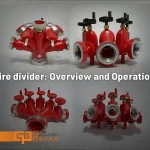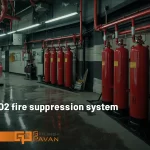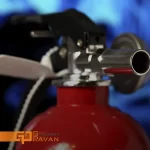We live in historic times – for the first time in human history, more than 50% of the world’s population live in cities.
This trend is not slowing down, especially in developing cities in China and Asia. High-rise buildings are a reality of modern cities. They fulfil the need to provide efficient, cost-effective housing and work space for increasing numbers of people within the limited confines of the city. They maximise land use and economic efficiency using ever-taller high-rise towers to meet the needs of growing populations.
Evolution of current high-rise design
Fundamental challenges of high-rise fire safety
By their nature, high-rise buildings present unique fire-safety challenges. For designers, builders, operators and owners of these structures, a number of fundamental challenges must be addressed to provide a reasonable level of safety from fire and its effects.
- The building structure must sustain a prolonged fire exposure.
- Fire and its effects have the potential to spread vertically, affecting a large number of building occupants.
- Active fire systems may be cut off from public utilities and must be self-sufficient.
- Full building evacuation is very difficult. A ‘Defend in Place’ strategy is required with only selective evacuation from the Fire Area.
- Occupants that do need to evacuate are far from the ground and must rely on vertical means of escape.
- Firefighting operations occur internally and often far from the ground-based resources.
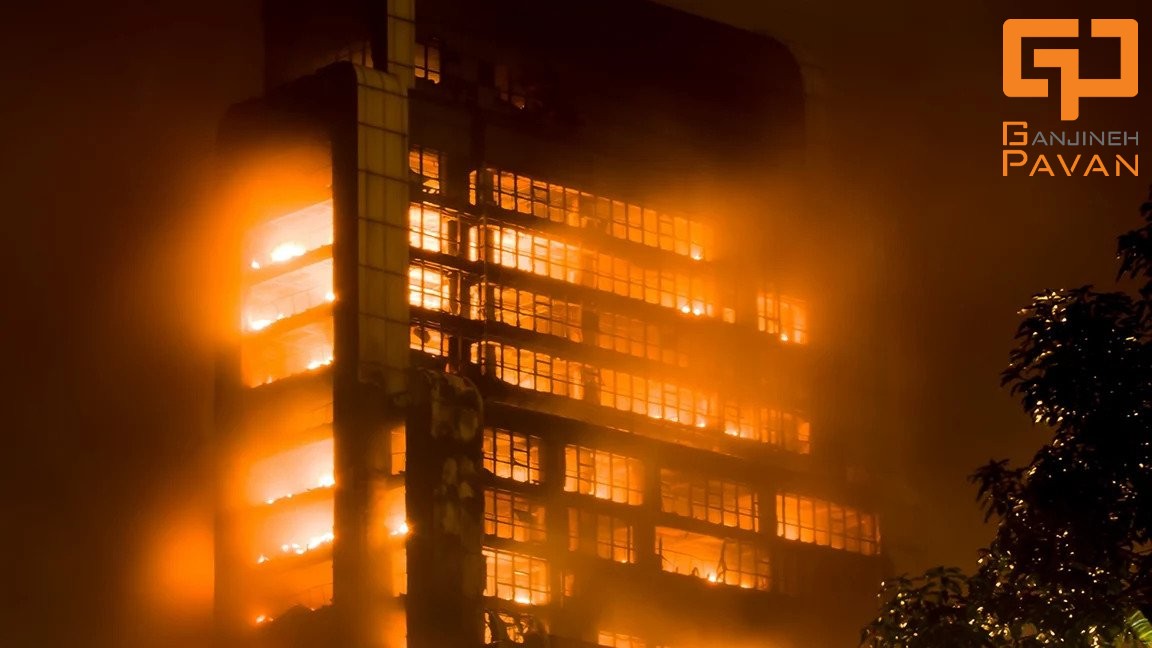
High-rise fire-safety approach
In response to these unique challenges, the overall fire strategy for high-rise buildings must include building features, systems and response procedures that achieve the following goals:
- Active and passive fire protection features to control fire growth and to minimise the effects of fire on the structure and its occupants. Active systems include automatic sprinkler protection to control/suppress fire in a small area and smoke-management systems to contain and control smoke movement to allow safe occupant evacuation. Passive elements include fire-resistant structure and fire barriers to keep the fire from spreading vertically. All active and passive systems must be maintained throughout the life of the building to function properly when needed.
- Means of egress features to facilitate occupant evacuation in the event of a fire. Occupants of the building must be protected from the effects of a fire in the building during their evacuation from the fire area. Fire-rated enclosed and mechanically pressurised stairs protect occupants from fire and smoke effects during evacuation. Fire detection, alarm and communication systems alert building personnel of a fire event and provide direction to occupants to evacuate.
- Firefighting support systems that support operations conducted primarily from inside the building, oftentimes in locations remote from fire-service apparatus and ground support. Firefighting support systems include vehicle access, firefighter’s elevators (lifts), fire command centre, fire standpipe (wet riser) systems and firefighter communications all designed to facilitate emergency responders. In addition, building response plans and procedures must be closely coordinated with first responders.
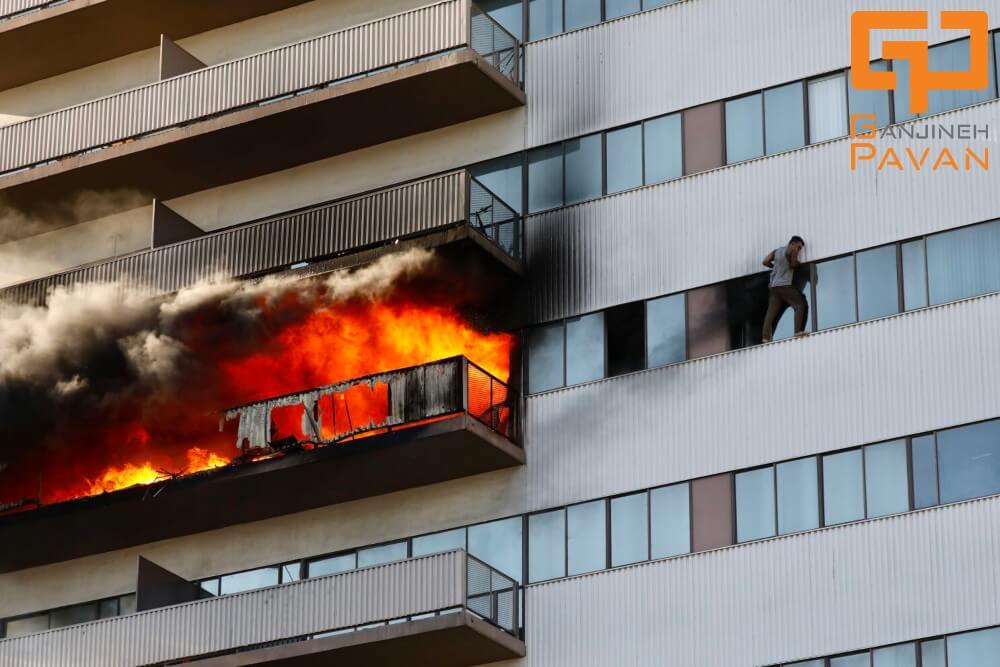
Codes and regulations
The development of specific regulations for high-rise buildings began after the Second World War with the expansion of high-rise construction, especially in the United States. The 1975 Chicago Building Code is one of the first codes to include a comprehensive chapter specifically for high-rise buildings – High-Rise Chapter 13. This section of the code addresses the following specific requirements for high-rise buildings:
- Structural Fire Resistance and Passive Protection Measures
- Automatic Sprinkler Systems
- Standpipes (Wet Risers)
- Occupant and Fire Dept. Voice Communications
- Stairway Unlocking to allow evacuating occupants to re-enter the building at a lower level away from the fire.
US Model Building Codes, British Standards and other European codes later added similar specific provisions for high-rise buildings. Many of these standards either have been adopted directly or have been used as a technical basis for high-rise standards in developing countries. The result is that there is significant variation in high-rise building standards from place to place and most especially in the treatment of existing high-rise structures built before the enforcement of modern high-rise building codes.
As a result of the terrorist attack on the World Trade Center towers on 11 September 2001, the US government initiated a review of high-rise design with the intention of providing recommended changes to building regulations to further protect high-rise buildings from extreme incidents. The results of these recommendations were first introduced into the US-based International Building Code in 2009. These include new requirements for buildings taller than 420ft (128m) associated with increased structural fire resistance, additional means of egress and resilience of active and passive fire-safety systems. Many of these provisions are incorporated in tall buildings globally.
Equally important to the technical standards is the process of implementing a successful fire-safety approach in new high-rise design or refurbishment of existing structures. The technical design for high-rise buildings always starts with establishing the regulatory framework for the project. This is done by confirming the local codes and standards applicable to the project – even in places with a significant number of tall buildings but especially in the developing world. Very tall buildings tend to be far more ambitious and complicated than anticipated by most building codes. For many projects, building codes may not fully address the fire-safety challenges and there may be a reason to look beyond the established codes for ‘enhancements’ to the fire- and life-safety aspects of the design.
In establishing this regulatory framework, the most important participant is the local authority having jurisdiction. They need to be engaged early and often throughout the design process. It is suggested that a ‘working group’ be created with permanent members from the design team, ownership, contractor and local authority. This group should be maintained from the start of design through construction and beyond. This group will also be responsible for agreeing on the application of the codes and any additional features of the design.

Contemporary high-rise design
In the design and operation of high-rise buildings, the designer should be aware of a number of emerging trends. Many of these new features and approaches are a result of our understanding that high-rise buildings require a great deal of resiliency, so that they maintain fire safety even when one system or feature fails. These new features are also based on our recognition that high-rise buildings must be designed to respond to a wide variety of emergencies, in addition to fire.
Active fire-protection systems are a critical component in high-rise fire safety. As a result, these systems must be designed to maximise their reliability. For systems that rely on fire pumps, the reliability of these pumps is critical. This can be achieved by the pump designed to NFPA/UL standard or by the provision of redundant – Duty + Active Standby – pumps. Finally, consider the use of multiple supply risers and the protection of critical risers within the building’s structural core. An alternative to systems that rely on fire pumps is to use a gravity or ‘down-feed’ system whereby water is delivered to sprinklers and standpipes by gravity from tanks located above the sprinkler system.
It is anticipated that full evacuation of a high-rise building will be required under a variety of scenarios including loss of power or loss of mechanical systems. For this reason, elevators can provide an alternative means of evacuating building occupants in some emergencies. In order to achieve this function, elevators must be specifically designed for this purpose and provided with emergency power. The building must include safe areas (refuge areas, sky lobbies or enclosed elevator lobbies) to facilitate staging or evacuation occupants. Elevators should be incorporated as part of the building’s emergency response plan and should be operated in emergencies by trained building staff.
Operational aspects
High-rise fire-safety strategies rely heavily on active fire systems and complex evacuation sequencing. For this reason, the operational aspects of high-rise buildings is of key importance. Active fire systems must be constantly monitored, maintained and tested to assure their reliability in an emergency.
Another critical operational aspect is emergency planning and training. This starts with an Emergency Management Plan that outlines all foreseeable emergency scenarios and the response of building staff to these emergencies. The Emergency Management Plan should define all threats whether they are natural disasters, terrorism and security, or building systems emergencies. They should include pre-planned response procedures for each event and they should include staff training and drills.
Future directions in high-rise fire safety
There is no doubt that cities will continue to grow and buildings will keep growing taller and taller. This means a number of things for future high-rise fire-safety design and operation:
- More and increasingly complex active fire systems for fire control, smoke management, evacuation and firefighting.
- Increased structural fire resistance and robustness to ensure that buildings will stand, so occupants can exit.
- Reliability and redundancy of critical building features will be more critical.
- Design, construction and operational aspects will need to be more closely integrated so that buildings can be operated and maintained safely throughout their lifecycle.
Fire safety in high-rise buildings is the shared challenge of designers, builders, fire authorities, owner/operators and users to maintain a safe building environment for building occupants and first responders.



